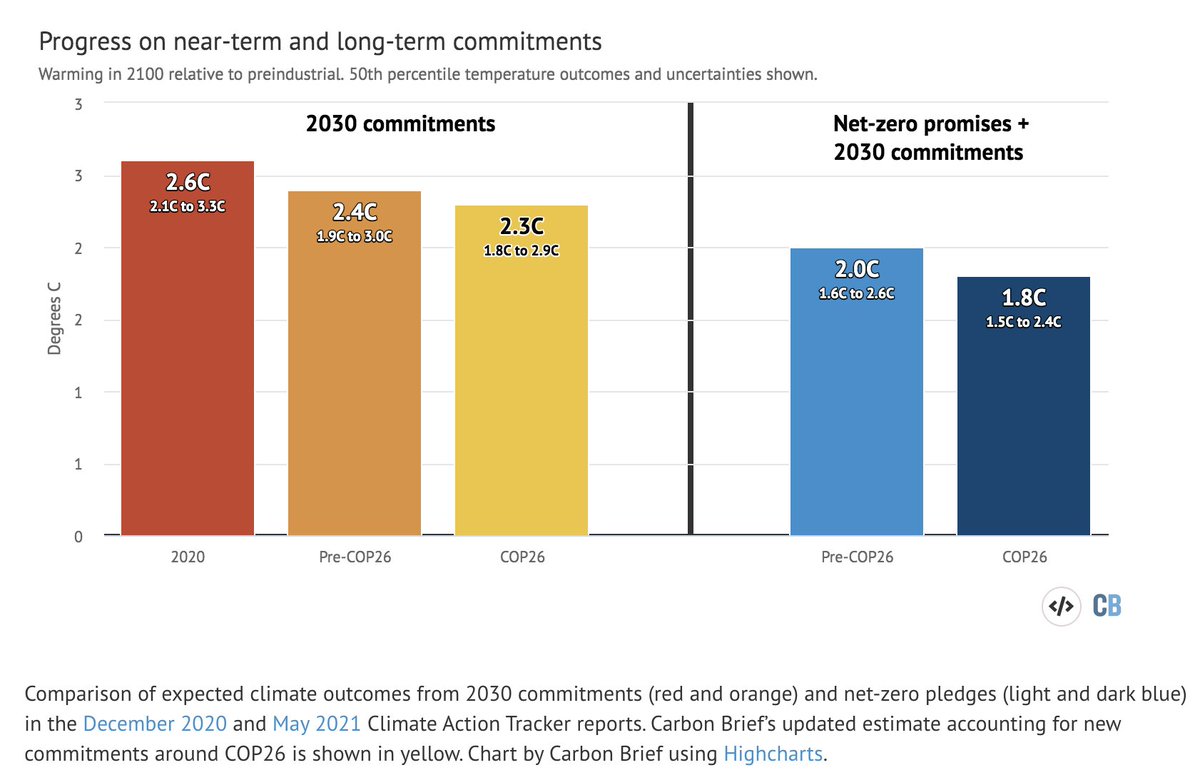
A good summary of views of scientists coming out of COP26. Some like @ClimateOpp are ready to declare the 1.5C dead, while others hold out a bit more hope based on enhanced long-term net-zero promises that countries have made. apnews.com/article/climat…
As I told @borenbears, where we are headed coming out of COP26 based on more solid near-term commitments is probably ~2.3C (1.8C - 2.9C) – and that is assuming all 2030 NDCs are reached. We can – and hopefully will – do better as countries ratchet up commitments in coming years. 

There is a lot of nuance in which outcomes (current policy, near-term commitments, or long term promises) folks decide to emphasize. Here is the full remarks I sent the AP that tries to sort it all out: 

So, is hope for 1.5C alive? To paraphrase my friend @Peters_Glen, yes, but only in a model. cicero.oslo.no/en/posts/news/…
Of course, Glen made those remarks 6 years ago referring to the 2C target – and I'd argue we now have more viable pathways to limit warming to below-2C today.
Of course, Glen made those remarks 6 years ago referring to the 2C target – and I'd argue we now have more viable pathways to limit warming to below-2C today.
Projecting the future is hard, and that should give us a bit pause before making claims of what is possible, even if we can more confidently opine on what appears plausible for the vantage of the present.
So lets cautiously celebrate progress that has been made as we move toward a world closer to below-2C, and the ghosts of 4C+ warming futures slowly fade away. But we still have a lot of work to both to meet and strengthen our current commitments 
https://twitter.com/hausfath/status/1459601519435726855

Even if 1.5C is dead, climate is ultimately a matter of degrees rather than thresholds. Every tenth of a degree matters for the natural world and generations to come, and an outcome of well-below 2C warming is still far batter than many of us suspected was possible a decade ago.
And who knows, perhaps clean energy will get cheaper and policy will advance faster than anyone is assuming today. Perhaps we will peak warming at 1.7C or 1.8C and draw it back down to 1.5C via large-scale net-negative emissions by 2100 or 2150. The future is still ours to write.
(Its worth pointing out these are all central estimates; we could get lucky and end up below 1.5C in a world on track for 1.8C because climate sensitivity and carbon cycle feedbacks are low; alternatively, we could get unlucky and end up at 2.5C. Uncertainty is not our friend)
• • •
Missing some Tweet in this thread? You can try to
force a refresh









